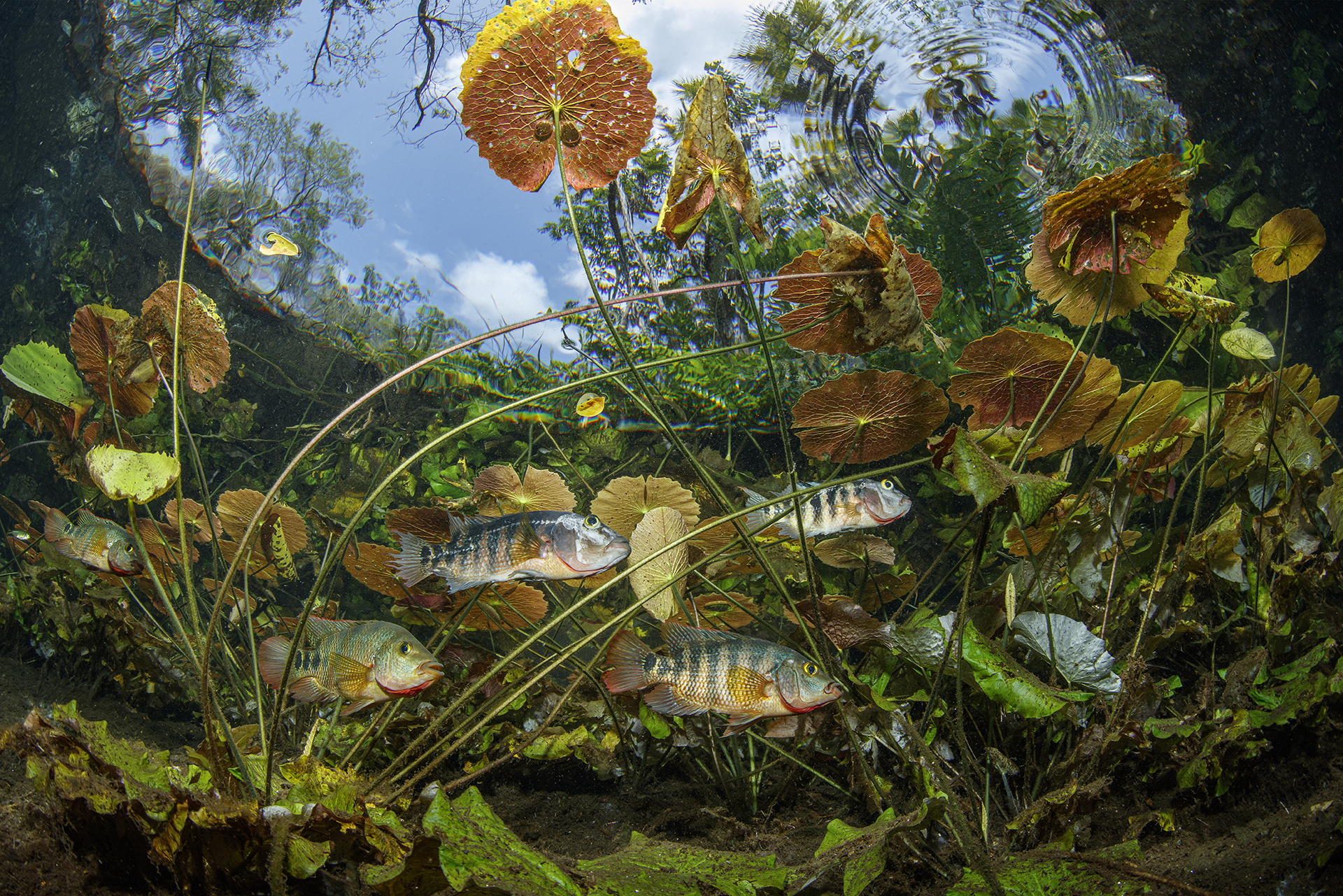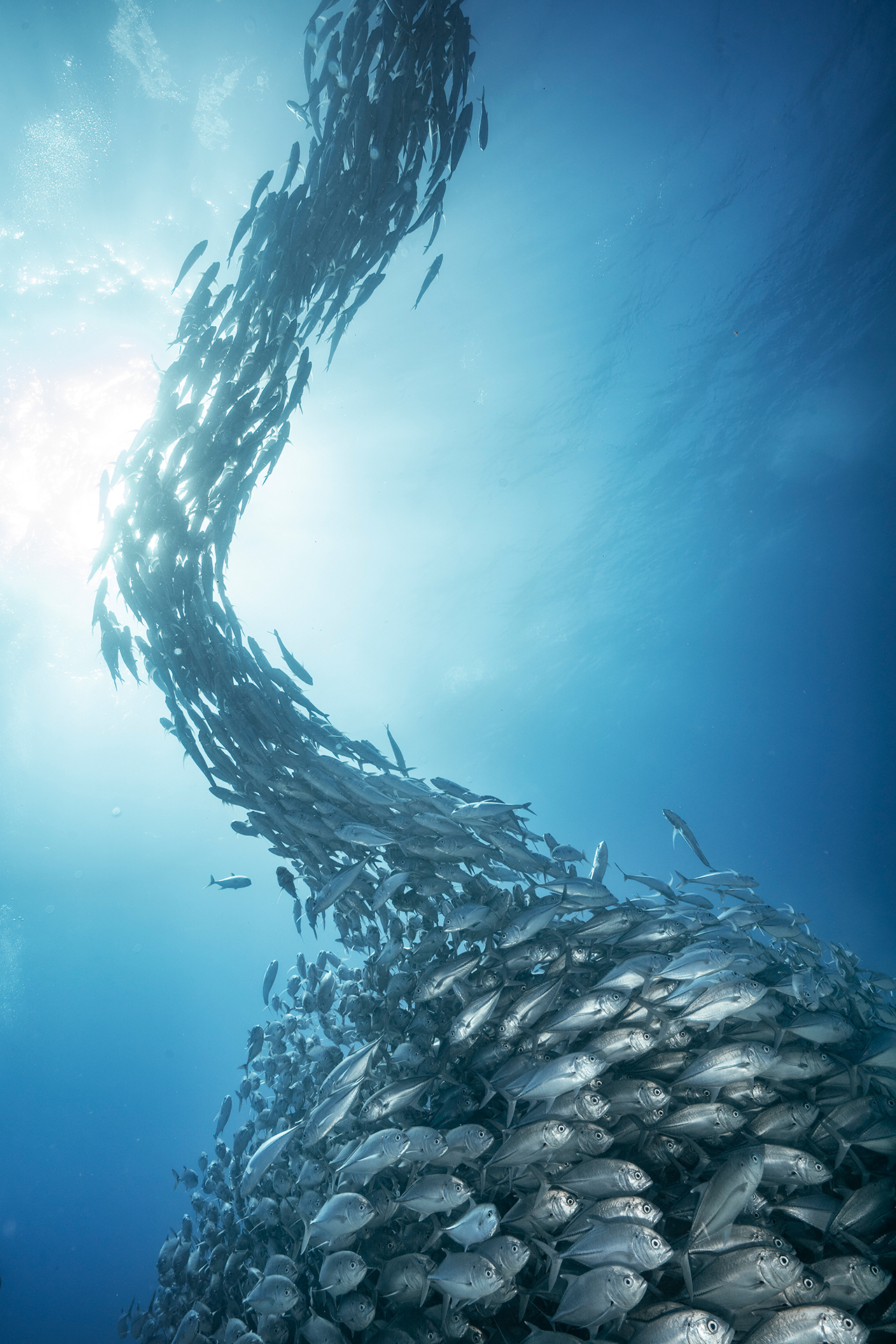GALLERY MONTPHOTO 2023
Underwater world
Hydromedusa de Franco Banfi de Cadro ()
Place: Groenlàndia
Description:
A tiny benthic hydrozoan jellyfish (Hydrozoa), with a bell size of less than one centimetre, is a piece of art.
It is one of the many gelatinous representatives of the 1000 species of hydro- and scypho-medusae, probably with more to be discovered, especially in deep or polar waters.
All are carnivorous, capturing prey with specialized stinging cells. A wide variety of prey is eaten by different medusae.
Wild and free de Merche Llobera de las rozas (Madrid)
Place: Costa Rica
Description:
A huge pod of spinner dolphins (Stenella longirostris) dives into the tropical waters of Costa Rica after delighting us on the surface with their acrobatic leaps. Their energetic and playful presence fills the image with vitality and joy, as the sun's rays illuminate their graceful silhouettes. Hopefully, in the near future, this will be the only way to see dolphins, happy and in FREEDOM.
Mayan cichlid de Franco Banfi de Cadro ()
Place: Cenote Nicte-Ha, Tulum, Península de Yucatan, Mèxic
Description:
Freshwater fishes, Mayan Cichlid (Cichlidae), hide in group among water plants and hundreds of water lilies (Nymphaeaceae) and leaves floating on the surface of cenote Nicte-Ha, a naturally beautiful, locally known and hidden gem of the cenotes’ system near Tulum.
Jack Fish Art de Merche Llobera de las rozas (Madrid)
Place: Cabo Pulmo, Baixa Califòrnia del Sud
Description:
In this image captured at Cabo Pulmo, you can see an amazing natural spectacle: a school of jacks (Carangidae) forming a figure that resembles a tornado. The jacks, with their silvery, glistening bodies, move in perfect synchronicity, twisting and undulating in a mesmerising aquatic ballet. The crystal clear turquoise ocean serves as the perfect backdrop for this incredible phenomenon.
Bailando de Alvaro Herrero Lopez de Majadahonda (Majadahonda)
Place: Moorea, Polinèsia Francesa
Description:
Photo half and half of a baby humpback whale (Megaptera novaeangliae) that played with us for more than two hours in the crystal clear waters of the island of Moorea, French Polynesia. While the mother was sleeping, the baby was curious and played with us.
Massive spawning de Marc Graf de Mürzzuschlag ()
Place: Mariazell, Àustria
Description:
Each year this alpine pond - filled with crystal clear water - is visited by grass frogs (Rana temporaria) during their spawning season. Here, they have aggregated a massive "ball of eggs". Unfortunately, in recent years seasonal water sources disappear early in the year due to much drier conditions during winter with less snow and less rain resulting in a hard time for amphibians in the Alps.
Dos Ballenas y Sardinas de Wojciech Dopierala de Las Palmas de Gran Canaria (Las Palmas)
Place: Baixa Califòrnia del Sud
Description:
Two Bryde's whales (Balaenoptera brydei) attacking a ball of sardines (Clupeidae) competing with each other to get to the bait first. A Marlin (Istiophoridae) about 2m in size demonstrates the size of the whales and the school.
Rules of the web site | Legal advice | Privacy statement | Cookies policy | Change cookies preferences
Administration | Web design: ATMultimedia.com

.jpg)
.jpg)


.jpg)
.jpg)
.jpg)



